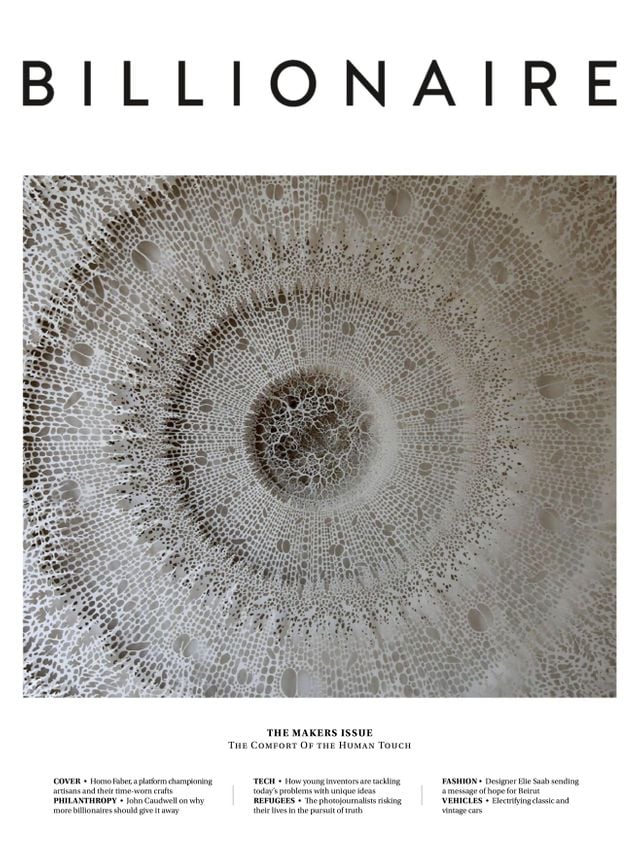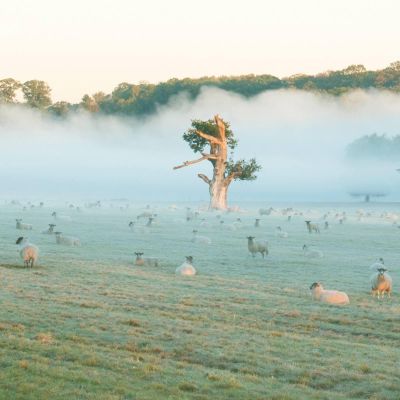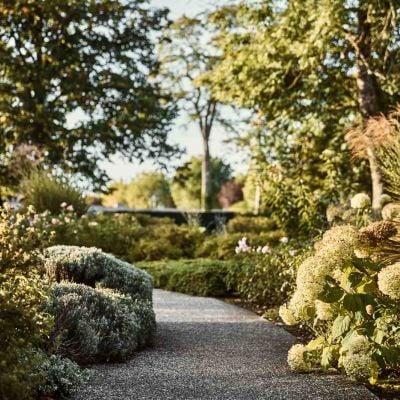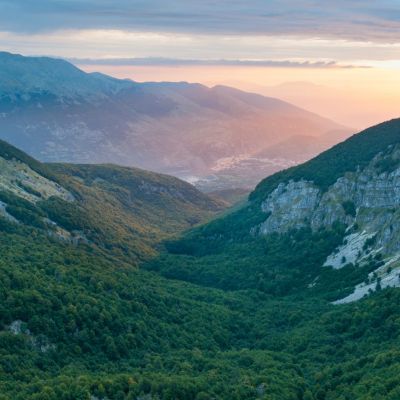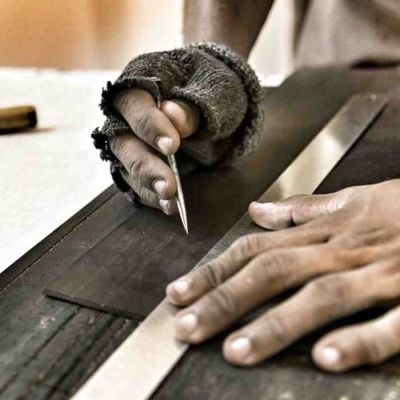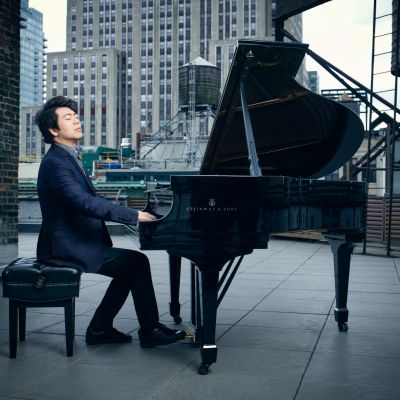Fabienne Verdier: Stained-glass Alchemy
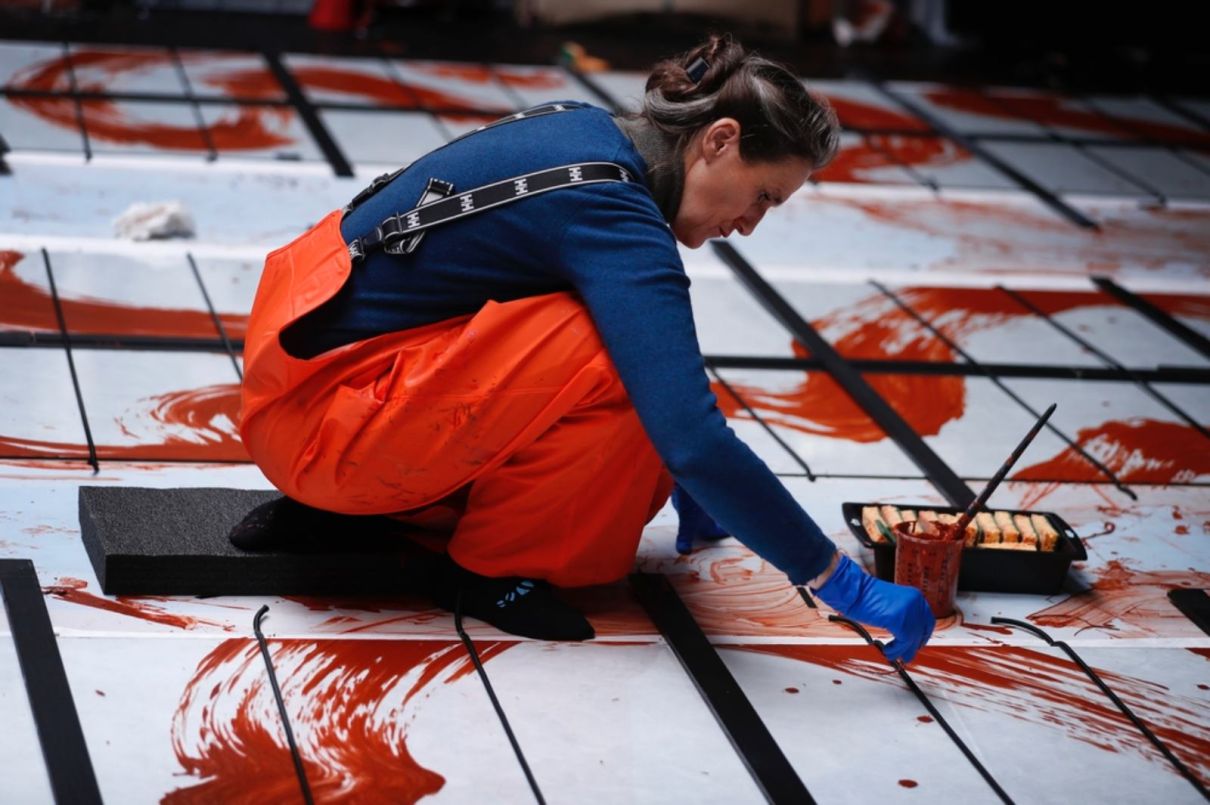
Fabienne Verdier returns to Nogent-sur-Seine for a vibrant artistic dialogue with Camille Claudel.
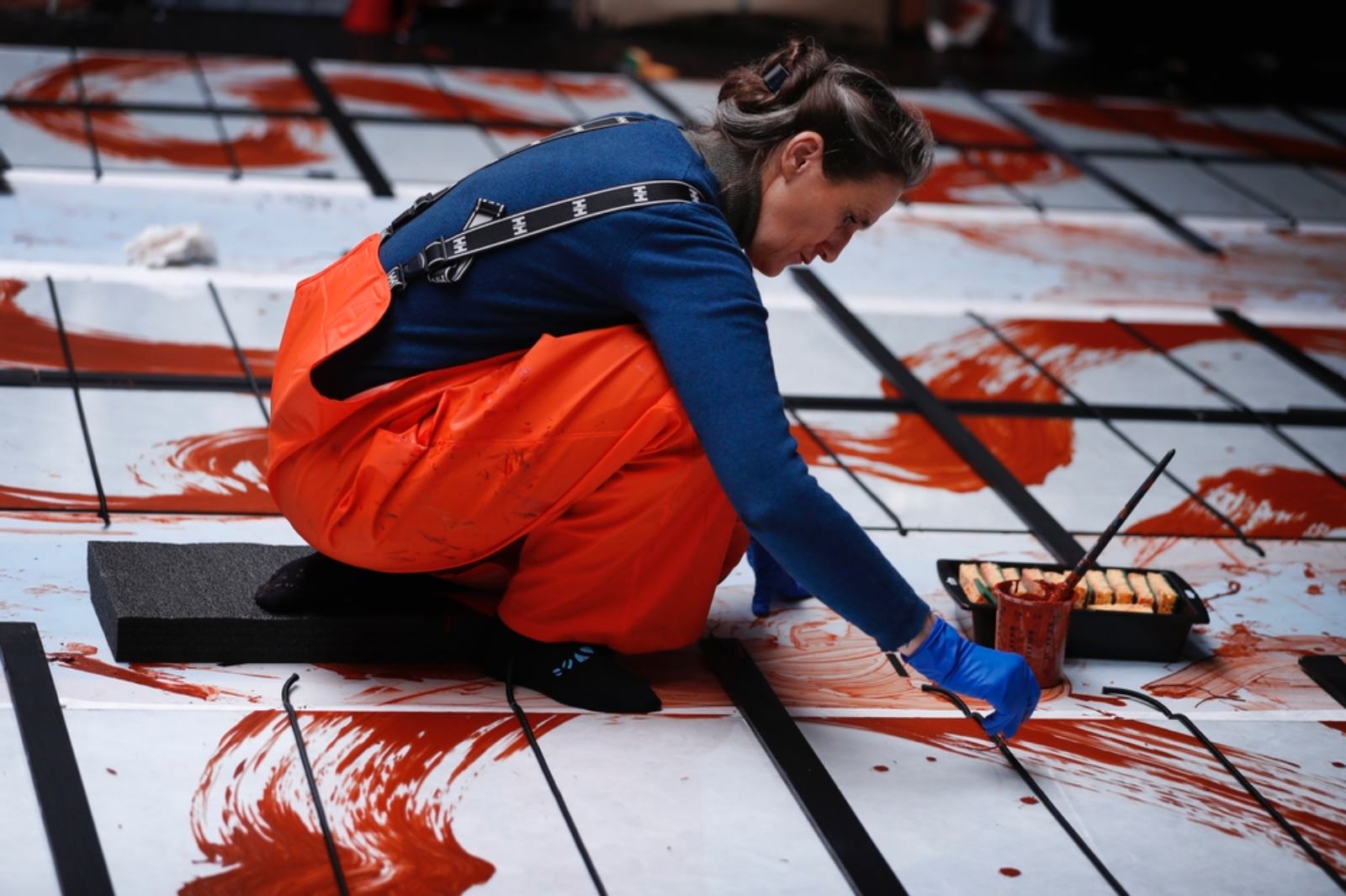
Fabienne Verdier spent 10 years in China learning calligraphy from one of its last living masters. She then developed a distinctive pictorial language, even building her own tools to translate physical energy and vital forces onto large canvases. Starting from observation and reflection, the artist engages her entire body in the act of painting. She guides her custom-made brushes through space over the multiple canvases laid on the floor, following a fluid trajectory where mental and material forces meet.
Perpetually solving equations with consciousness, space and gravity as variables, the artist produces works that result from the fusion of mind and matter. It is not surprising then that after years of turning liquids into fluid solids, Verdier took up a new challenge: transmuting silver into gold.
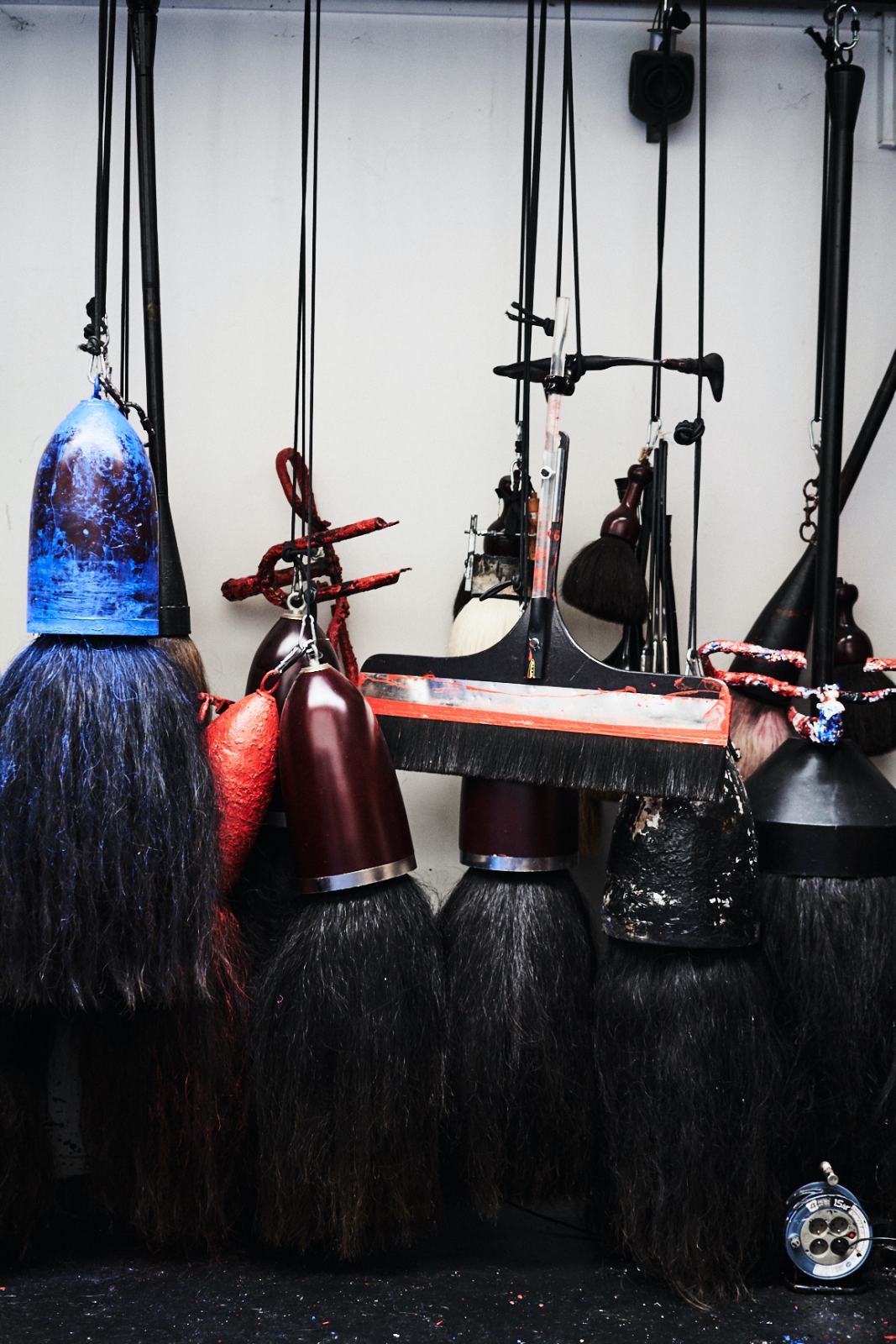
In 2016 the artist was commissioned to make stained-glass windows for the choir of Saint Laurent church in Nogent-sur-Seine, located 60 miles east of Paris. Emboldened by Pierre Soulages’ earlier reinvention of the medium for the Abbey Church of Sainte-Foye in Conques, Verdier brilliantly transposed her painting technique onto glass. Completed in 2018, the large polyptych entitled Lucis Potentia (The Force of Light) was executed in collaboration with stained-glass master Flavie Serrière Vincent-Petit.
An experienced artisan used to putting her inventive craftsmanship at the service of artists and architects, Vincent-Petit enabled Verdier to take her calligraphic language into the field of glass. Together they revisited an ancient technique devised to colour glass yellow. Known as silver stain, the technique was introduced to stained glass in the 14th century. It consists in painting silver compounds (such as silver nitrate, chloride, sulphate or oxide) onto glass and then firing it in the kiln to temperatures between 500 and 650°C, which results in colours ranging from pale lemon to deep orange. Silver stain was originally used to highlight certain details, such as angels’ wings, halos or hair, as bright touches animating grisaille glass.
Verdier naturally emancipated from tradition and explored the expressive potential of coloured glass through movement and light. Intent on conveying pure energy, she exploited the particular glow of silver stain in a process equating to alchemy: through fire the opaque ochre paint applied onto glass turns into transparent gold, as if materialising something intangible. The chromatic vibration of the pattern is amplified by the breadth of the brushstrokes. Like unfurling waves, the meandering lines run from one window pane to the other, embracing the Gothic architecture. The composition further pours into space when the windows are hit by direct sunlight; golden patterns then flood the stones of the surrounding vaults, columns and floors. The contrast between the white opaque background and the transparent yellow motifs adds another layer of spatial complexity, so that the eye constantly oscillates between surface and depth, void and abundance.
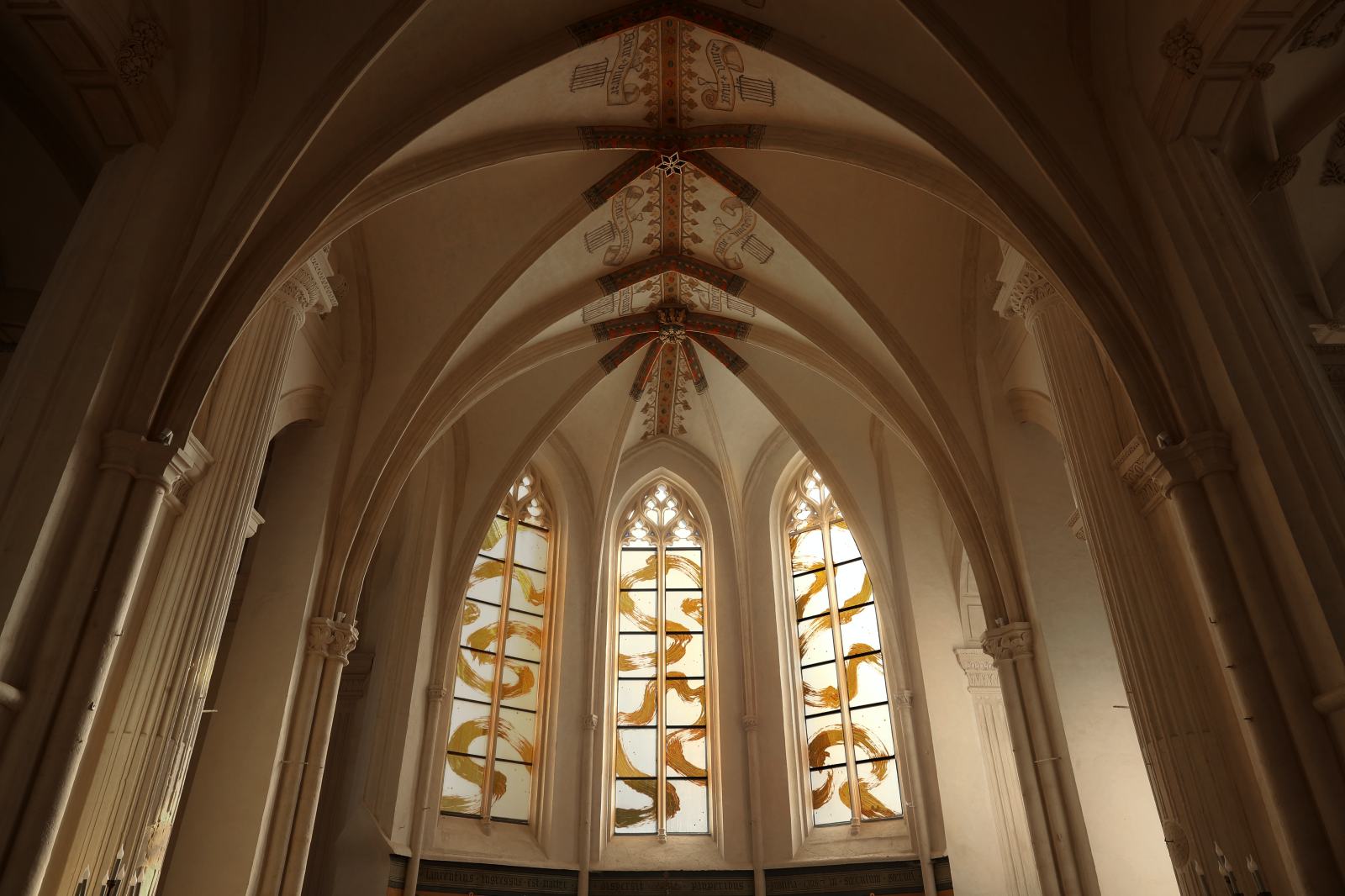
So fruitful was the collaboration between the painter and the stained-glass master that once this first project was completed, the experiments went on. These developments form the core of the exhibition in the Camille Claudel Museum, which takes visitors behind the scenes with a selection of glassmaking tools, photographs and videos illustrating the creative process. The show brings together paintings on glass and works on canvas, illustrating the ways in which this recent collaboration both reflected and inflected the artist’s practise. Topographies Imaginaires are an extension of the stained-glass windows, on a more intimate scale.
Also on display for the first time is the series of glass panels executed by Verdier and Vincent-Petit in 2021 as a tribute to Camille Claudel’s La Valse (1893). While these works are a response to the vibrant energy encapsulated in the iconic sculpture, they echo Verdier’s earlier explorations of music and movement, as manifested in the Vortex paintings. One of these panels will enter the museum’s permanent collection, as a gift from one female artist to another, who once lived in these walls. Indeed, Claudel spent some of her early years in this little town on the banks of the Seine. There she met Alfred Boucher who became her first master, before he introduced her to Auguste Rodin. La Valse encapsulates the formidable spirit of the female sculptor whose artistic career came to a tragically premature end. Rodin famously said of his most talented pupil, muse and lover: “I showed her where to find gold, but the gold she finds belongs to her.” And, so, Claudel’s genius lives on through Verdier’s powerful alchemy.
L’Alchimie du Vitrail, Musée Camille Claudel, Nogent-sur-Seine, 2 April to 26 September 2022.

